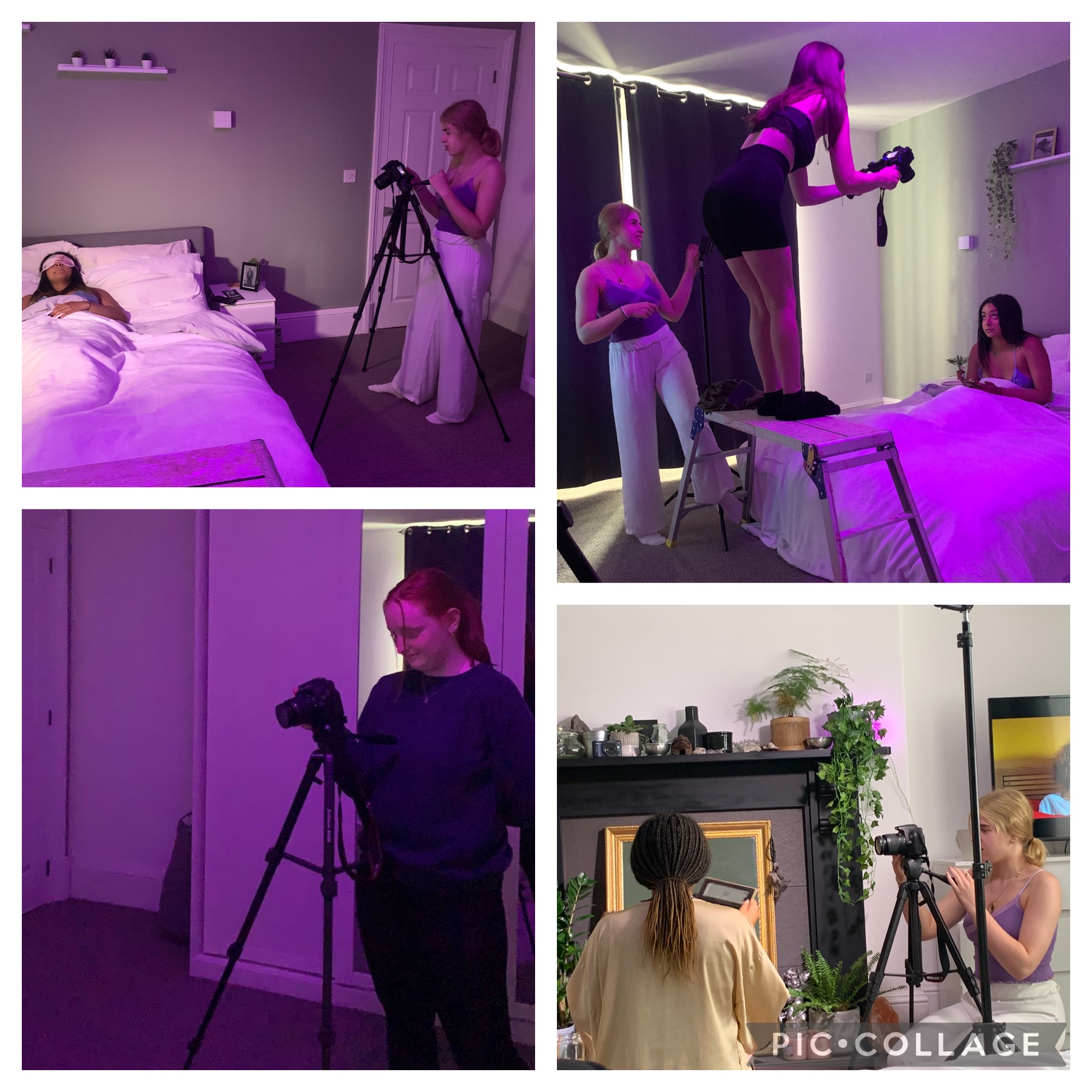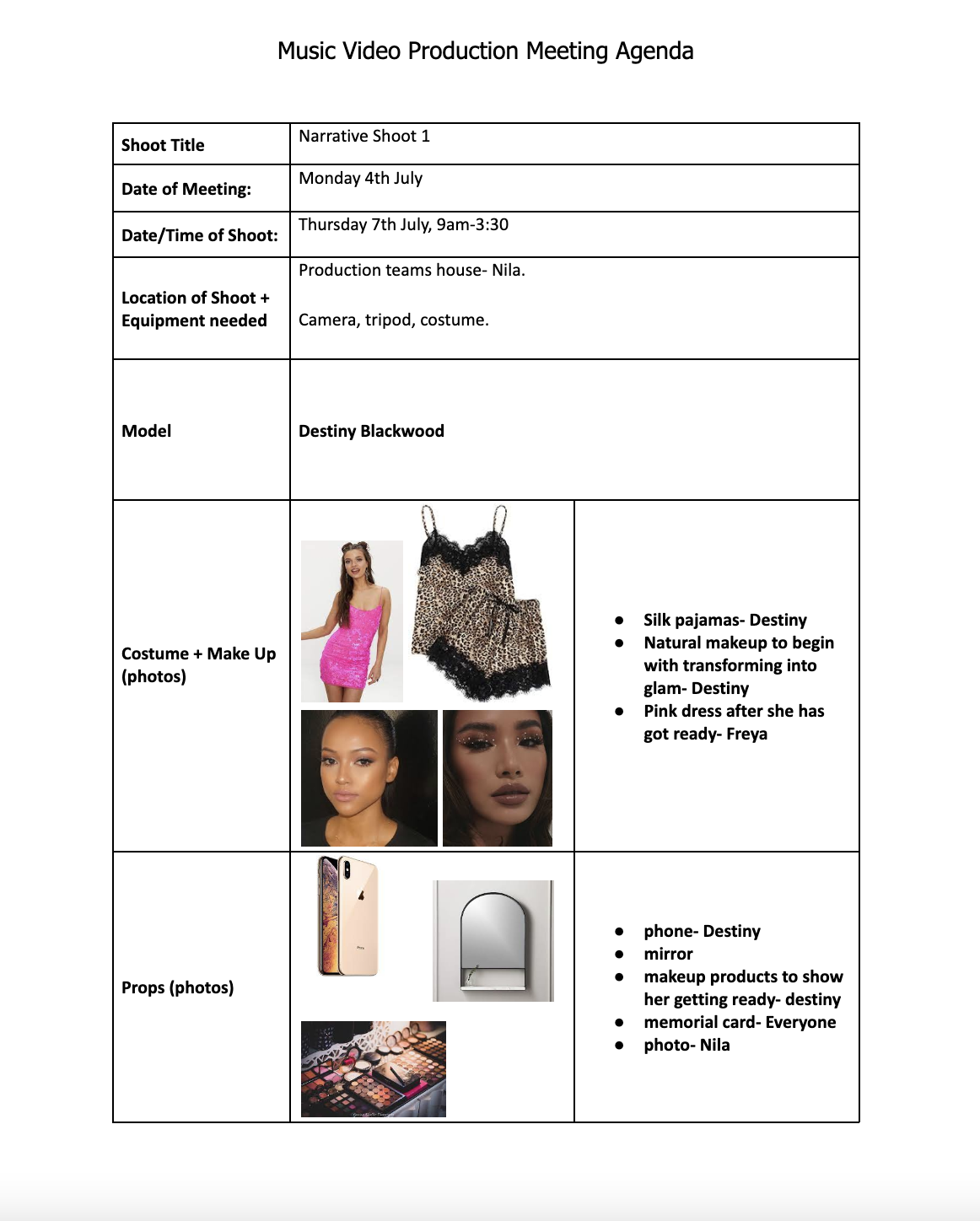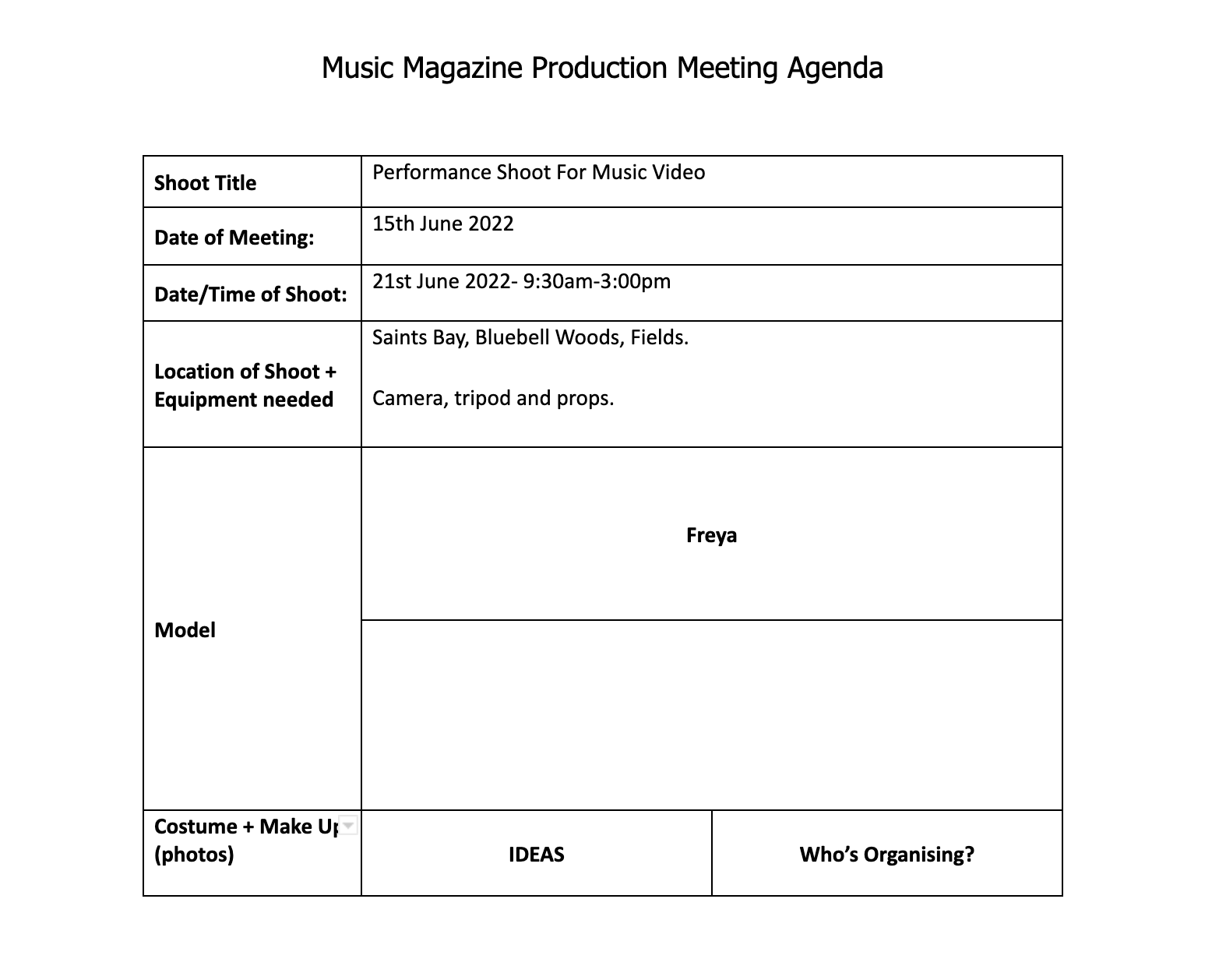Over the summer holidays, we were able to gather all the footage that we needed to be able to complete our music video. In order to complete our five shoots during the summer, our group as a whole had to be organised, knowing when and where we were filming and what was required for them to bring. Due to our prior organisation we were able to have multiple successful shoots.
As we have now gathered all of ur footage, we have split our group into two pairs to ensure that editing is split fairly and that we are all able to contribute our editing skills equally. Embedded below is the second draft of our music video which now includes our narrative aspect as well as our performance aspect. Our second draft is nowhere near completion, however it is important at this stage of editing to grasp an idea of what we need to improve upon to move forward with our video and anything extra that my partner and I want to add, this includes any extra features we want to incorporate such as transitions, colour effects and other filters.
Our Second Draft:
Now that we have created a rough edit of our performance and narrative, we now need to go through the assessment criteria to ensure that we include everything and anything that has not yet been included is thought about later on in our next drafts. In order to keep our audience engaged throughout the video, we need to use a variety of shot distances and angles. Thankfully whilst collecting our footage, we thought to film from a variety of different distances and angles which allows us to have variety throughout our music video helping to make it visually pleasing and exciting to keep our audience engaged.
Self Assessment Sheet:
What Went Well:
- Our narrative and performance footage blends well together, and there is no confusion between the two parts.
- There is a clear, well planned storyline which minimises confusion.
- Most of our performance footage is synced up to the soundtrack.
- The variety of shot distances and angles helps to portray a clear star image and keeps the video exciting.
- Mise en scene helps to portray our storyline and keep it moving whilst not having it being the only feature of the video.
What We Could Improve:
- We need to edit to the beat more as we continue to edit our video.
- Some of our performance aspect is out of sync with the soundtrack, so that will need to be fixed.
- We need to think about adding effects such as filters or colour correction to improve the quality of our video.
- One of our performance shoots is yet to be included in the video. In doing this we will be able to use performance footage that matches the feel of parts of our narrative footage.
- My partner and I need to add a strong beginning and ending to our video to draw in our audience and leave them feeling satisfied.
- We need to consider parts of our party scene and see what works within our video.
Teacher Feedback:
Now that we have submitted our first draft to our subject teacher, we have been given feedback on what could be improved within our video.
- Add some close ups of our performer instead of just midshots.
- We need to not jump between the footage of our performer with a mic and without a mic for consistency.
- When our actor opens the curtains, flash to a white screen to add to this part of the video.
- Consider if some elements of our party scene are completely necessary as some parts seem comical.
- Improve upon some of the lip syncing elements and make sure they’re all in time.
Now that we have been able to reflect on the progress we have made. We are able to begin to focus forward to the improvements that need to be made to fulfill the assessment criteria. Our rough draft above has allowed us to focus on what we need to include and has given my partner and I time to focus on the tiny details that improve our video and help to it work.







